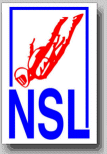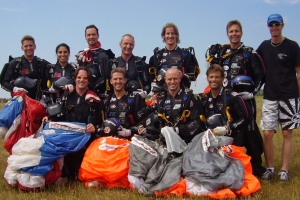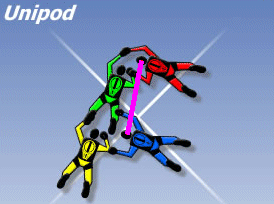
National
Skydiving
League
226 Pecan Street
Deland FL 32724
tel: (386) 801-0804
© 2003 - 2025
All Rights Reserved


226 Pecan Street
Deland FL 32724
tel: (386) 801-0804
© 2003 - 2025
All Rights Reserved



The sequences of Rounds 7 (12-21-C) and 8 (H-7-16) began with complete formations out the Pilatus Porter door for the US national team. The slow sequence of Round 7, with Block 12 (Bundy - Bundy) on the hill, did not allow Odyssey to get back to the level of only 20-pointers. However, Round 8 with 26 points helped to lift up the meet average to the 21.7 after ten rounds.
The new Airspeed Odyssey meet videos come along with new 4-way tips by John Hart. The Fastrax Tail will soon have the opportunity to resume the direct competition with Airspeed Odyssey, which was a special feature throughout the whole 2007 season (FSL Shamrock Showdown 2007 > World Challenge 2007 > Malevsky Cup 2007 > USPA Nationals 2007).


Neither the Golden Knights nor Team Fastrax has trained 4-way this year. However, both teams will jump from the Twinotter, while all national teams will exit from the Pilatus Porter, including Airspeed Odyssey. This situation may bring the two 4-way teams of Knight Trax very close to Odyssey. The US national team will appreciate the additional pressure.
A drill is a skydive in a format other than that of a competition dive. These are used to focus training on particular skill sets. Many teams use drill dives, particularly early in their training season. Some of the types of drills used are:
- Stop drills
- Speed drills


- Look across the formation. The more effectively you use your mirror as a reference point, the better you can maintain fall rate and stop in your exact, proper slot.
- Look at the grips. Taking a moment to look at the grips you are taking will minimize the chances of fumbled grips.
- Look into the formation. This will heighten everyone's awareness of when the formation is built and ready to be keyed, and will minimize the chances of level differences developing while jumpers are on grips.
Direct eye contact between teammates is an important part of keying formations. For instance, when building a Unipod, the inside center ensures the grips are built at the back of the formation, then looks up to the point to establish eye contact verifying the front grips are built.